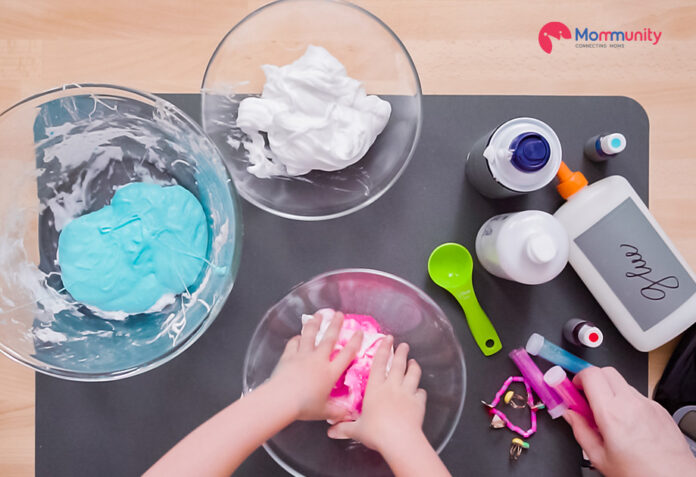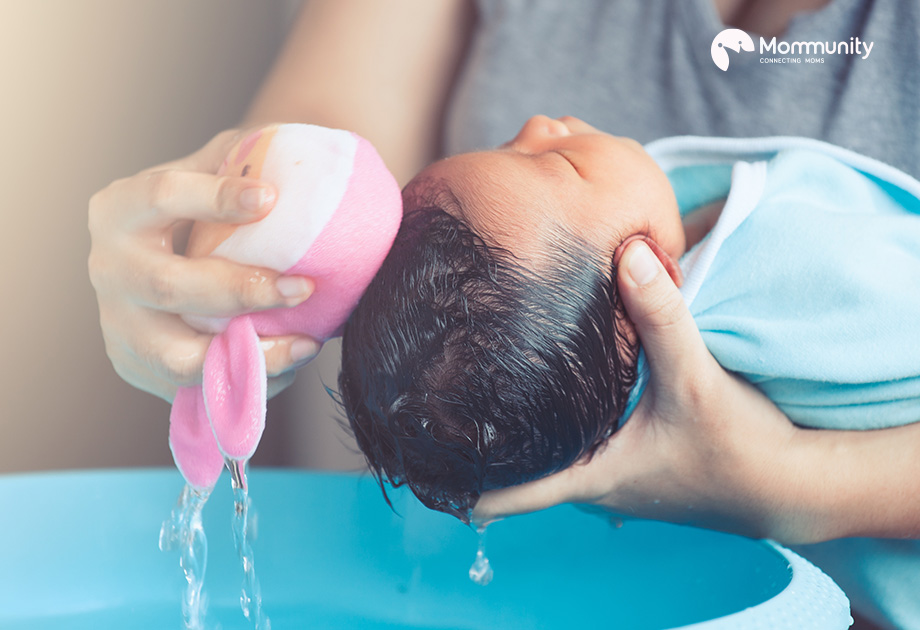|
Getting your Trinity Audio player ready...
|
Have you ever wondered why slime has become such a popular trend lately? Or have you ever tried to make slime at home, but ended up with a gooey mess? If you answered yes to either of these questions, then you’re in luck!
Making slime is not only a fun and creative activity, but it can also be a great way to learn about science and sensory play. In this guide, we’ll show you a safe and easy slime recipe perfect for beginners. So, are you ready to get your hands dirty and have some squishy fun and make slime at home? Let’s dive in!
What is Slime?
Slime is a substance that has caught the attention of many, especially children. But did you know that it is a non-Newtonian fluid? This means that it possesses both solid and liquid properties. When you apply pressure on it, it behaves like a solid and maintains its shape. However, when you manipulate it slowly, it flows like a liquid. This unique characteristic of slime makes it a fascinating material for children to explore and learn about the science of polymers.
Why Make Slime at Home? 5 Solid Reasons
There are numerous reasons to make slime at home is a fantastic activity for children:
1. Fun and Engaging
Slime is undeniably fun to play with! The act of squishing, stretching, and molding it provides hours of sensory entertainment.
2. Sparks Creativity
Slime play encourages creativity and imaginative thinking. Kids can add colors, glitter, and other embellishments to personalize their slime creations.
3. Introduces Science Concepts
Making slime is a simple yet effective way to introduce kids to scientific concepts like polymers and chemical reactions.
4. Easy and Accessible
The ingredients for slime are readily available and affordable, making it an accessible activity for families of all backgrounds.
5. Strengthens Fine Motor Skills
The act of kneading and manipulating the slime helps to strengthen children’s fine motor skills, which are essential for tasks like writing and buttoning clothing.
Safety Precautions for Making Slime
While slime is generally safe, there are a few precautions to keep in mind:
- Adult Supervision
Always supervise young children when making slime, especially those who tend to put things in their mouths.
- Safe Ingredients
Opt for recipes that use safe and non-toxic ingredients. This recipe avoids borax, a common slime ingredient that can be irritating to the skin and eyes.
- Clean Up
Wash hands thoroughly after handling slime and playing with it.
The Perfect Slime Recipe for Beginners
This easy-to-follow recipe utilizes safe, household ingredients to create a vibrant and satisfying slime:
Ingredients Required
- 1/2 cup (120 ml) clear school glue
- 1/4 cup (60 ml) warm water
- 1 tablespoon (15 ml) liquid laundry detergent (clear or white)
- Food coloring (optional)
- Glitter (optional)
Equipment Required
- Mixing bowl
- Spoon
- Measuring cup
Instructions To Make Slime at Home
- Prepare the Glue Mixture
In your mixing bowl, pour in the ½ cup of clear school glue. If desired, add a few drops of food coloring to the glue and mix well to create a uniform color.
- Activate with Water
Pour the ¼ cup of warm water into the glue mixture and stir gently until well combined.
- Introduce the Magic Ingredient
This is where the science happens! Slowly add the liquid laundry detergent, one tablespoon at a time, while continuously stirring the mixture. As you add the detergent, the mixture will begin to thicken and take on a slime-like consistency.
- The Stretch Test
Once the mixture becomes difficult to stir and starts to pull away from the sides of the bowl, it’s time to test it. Gently pick up some of the slime with your fingers. You’ve reached the perfect slime consistency if it stretches slightly but doesn’t stick excessively to your hands!
- Knead and Play
If the slime feels sticky, add a few more drops of laundry detergent, one at a time, and continue kneading until it reaches the desired consistency. For extra sparkle and fun, knead in some glitter.
7 Useful Tips for Slime Recipe Success
1. Quality Glue Matters
Opt for a clear school glue brand for the best results. Elmer’s glue is a popular and reliable choice.
2. Temperature Matters
Use warm water to activate the slime. Cold water may not be as effective.
3. Less is More
Start with a small amount of laundry detergent and gradually add more until you achieve the desired consistency. Adding too much detergent can make the slime stiff and difficult to play with.
4. Let it Rest
After kneading your slime, allow it to rest for a few minutes. This allows the ingredients to interact fully and can improve the final consistency.
5. Storage Solutions
Store your slime in an airtight container, such as a resealable plastic bag or container. This will help prevent it from drying out or attracting dust.
6. Slime Troubleshooting
- Slime is too sticky
If your slime feels overly sticky, add a minimal amount of additional laundry detergent, a few drops at a time, and knead it in until the stickiness subsides.
- Slime is too stiff
If your slime is too stiff and difficult to stretch, add a tiny bit of warm water, a teaspoon at a time, and knead it in until it becomes softer and more manageable.
7. Slime Science Exploration
Once you’ve mastered the basic slime recipe, encourage your child to explore further! You can experiment with different colors, glitters, and even try adding small scented beads for an olfactory twist.
Slime Fun Beyond Play
While slime is fantastic for fun and sensory play, it can also be a valuable learning tool. Here are some ideas to incorporate science exploration into your slime time:
- Explore Polymer Science
Explain to your child that glue acts as a polymer, a long chain-like molecule. The laundry detergent disrupts the bonds between the glue molecules, creating a new mixture with unique properties.
- Experiment with Different Ingredients
Explore how different types of glue or liquid starch impact the final slime consistency. You can also try using a saline solution as an alternative activator (always with adult supervision).
- Record Your Findings
Encourage your child to keep a slime journal! They can document the ingredients used, the observed textures, and any challenges they encounter. This facilitates scientific thinking and observation skills.
The process to make slime at home is a fun and educational activity for kids of all ages. This safe and easy-to-follow recipe is a great starting point for hours of creative slime-making. With a little adult supervision and scientific exploration, making slime can ignite a lifelong passion for learning and discovery.
We hope that this guide has equipped you to make slime at home with your children. Please share your slime creations and favorite slime recipes in the comments section below. What colors, glitters, or other embellishments do your kids love to add to their slime?
FAQs: How To Make Slime At Home
Q: Is slime safe for children?
A: Slime made with safe ingredients like this recipe is generally safe for children. However, adult supervision is always recommended, especially for younger children who may put things in their mouths.
Q: My slime is too sticky! How can I fix it?
A: If your slime is too sticky, add a few drops of laundry detergent, one at a time, and knead it in until the stickiness is resolved.
Q: My slime is too stiff! What can I do?
A: If your slime is too stiff, add a teaspoon of warm water at a time and knead it in until it reaches the desired consistency.
Q: Can I use a different type of glue?
A: While you can experiment with other glues, clear school glue generally produces the best results for slime-making.
We hope that this comprehensive guide has provided you with all the necessary information to embark on a fun and educational slime-making journey with your kids. You can now make slime at home, express your creativity, and immerse yourself in the delightful and satisfying realm of slime!




